“It’s not Frankenstein – it’s Frankenstein’s monster!”
Today, dear listener, we explore recent books by those who have followed in the wake of the remarkable Mary Woollencraft Shellfish, author of Extreme Surgery for Girls: How to Construct A Real Husband (aka Frankenstein). And even better, we have spared any expense by commissioning someone already into this stuff, our regular guest reviewer Dave Brzeski. It took us several lightning storms to get Dave going again and off the slab, but here we are…
FRANKENSTEIN IN THE TWENTY FIRST CENTURY
by Dave Brzeski
Mary Shelley created a monster! I’m not talking about Frankenstein’s creation here – I’m talking about the book itself. Rarely has a single novel given birth to so many ‘sequels’ and re-imaginings as Frankenstein: Or the Modern Prometheus.
There are an awful lot of Frankenstein books on the market these days. For the purpose of this review, I’m limiting myself to novels – no comics, short stories, TV shows, films etc. They must be either stand alone, or part of a series first published since the beginning of the millennium. And I must consider them to be of a decent standard. Life is too short to waste time on bad books. I have no doubt missed more than a few. Please feel free to mention any egregious omissions in the comments.
This article/review has been a long time coming. I actually wrote most of the Planisek part back in 2014, for a review on the British Fantasy Society website. I’d originally intended to cover all the books that were currently available in each series, but Frank Schildiner was already working on his third when I first came up with the idea – in fact it’s now available. Then I decided that it had been so long between volumes of Pete Planisek’s trilogy that I’d need to re-read the first volume, before I could move on to the second. I also realised that Dean Koontz’s series ran to five volumes and there was simply no way… Putting this piece together was going to have to be squeezed in between other review commitments, editing various books and a magazine. If I stuck with the original plan I’d never get it done. So I decided to limit it to the first book in each series.
1) Derrick Ferguson
Derrick Ferguson’s The Madness of Frankenstein (Pulpwork Press 2014) has to be considered from the perspective of what it actually is – and that is a love letter to Hammer Films!
It’s a page-turner of a novella, which follows Peter Holden, an enthusiastic doctor who considers Frankenstein to be a misunderstood genius. Holden himself is under trial at the beginning of the story, for Frankenstein-like crimes and blasphemy and about to be sentenced to death, when he is rescued by a beautiful messenger who convinces his judges that he could provide useful information if given over to the care and questioning of Doctor Edward Voss, director of the Vandicutt Institute for the Incurably Insane.
It’s a fast-paced pulp adventure story, told with tongue firmly in cheek and many a sly wink. The astute reader will recognise many of the names that characters and places are given – such as Wrightson and Moorcock. Some are clearly nods to Ferguson’s influences. Justicer Wrightson is a Solomon Kane like figure – if Kane was a total arsehole. Those of us well versed in classic television shows will know that trusting a witch named Angelique is never going to end well. The Hammer Film influence is served with a good helping of 1980s horror movie gore just for good measure. Those who prefer a clear cut good versus evil element to their fiction should be warned – there are no good characters to be found in this book, and little evidence of any with a balanced state of mind.
It is, I have to say, not a perfect book. There are a few anachronisms and too many typos. One can’t look too closely at the science involved, obviously – let’s not forget that this aspect is influenced not only by Hammer Films, but also the earlier Universal horror classics. Having said that, I was very taken with the clever, if unlikely variation on a crash cart, which was powered by a tank of giant electric eels. By sheer coincidence I recently watched the I, Frankenstein film (which came out in 2014, same year as this book) which used the same idea. Curiosity led me to ask Derrick Ferguson who actually originated the idea and he informed me that it was first seen in the Kenneth Branagh movie, Mary Shelley’s Frankenstein (1994).
In conclusion, this is a fairly fast, fun read, although it would have benefited from one more editing pass. I was quite sorry to discover that Ferguson has no plans to continue this into a series.
2) Frank Schildiner
Frank Schildiner has contributed three novels to the Frankenstein mythos so far. All are actually continuations of the French pulp Frankenstein books of Jean-Claude Carrière. Carrière’s version of our favourite monster is given the name Gouroull and he’s not the sympathetic character we’ve come to know and love. Gouroull is pure evil – a nihilist who wants nothing more than to eradicate humanity. He reminded me slightly of the Marvel Comics villain, Thanos, except if Gouroull met Lady Death, he’d likely want to destroy her too! Gouroull is also insanely powerful, easily besting warriors, witches and even vampire lords in his quest to procure a suitable skeleton on which to build a mate.
The first book, The Quest of Frankenstein is entirely given over to Gouroull’s obsession with creating a new race. In this quest he is aided by H.P. Lovecraft’s Herbert West. The crossovers do not end there. Gouroull encounters many well-known characters from film and literature in his travels. Schildiner even gives us a helpful chapter by chapter breakdown of his character sources in the Afterword.
Do I like the basic concept of an utterly evil, insanely powerful Frankenstein’s Monster? – not particularly, if I’m honest. I’ve yet to read any of Carrière’s six Gouroull novels. English translations are finally being published, but since they were written in the late 50s, they don’t fit the brief of this article. As it is, I rather suspect I wouldn’t be a huge fan. That said, Schildiner writes a fast-paced pulp adventure that I found myself enjoying very much and I do plan on reading the follow-ups at some point.
3) Edward M Erdelac
Edward M. Erdelac is the third of the modern pulp fiction authors whose take on the Frankenstein legend I’m examining. This one was a surprise! I am well familiar with Erdelac’s work and have enjoyed all that I’ve read, but I wasn’t truly prepared for the sheer scope of Monstrumführer. On the one hand, it’s another classic pulp adventure involving the infamous Dr. Mengele’s attempts to use Dr Frankenstein’s notes to turn the tide of the second world war. On the other it’s a thought-provoking and informative look at that dark period of human history through the eyes of Jotham, a young Jew, as he witnesses and experiences horrors that remain for most of us the province of books and movies. Erdelac pulls no punches whatsoever, as he not only calls to task the pure evil of the Nazis, but also the Jews for the attitudes that fuelled the rage against them in the first place. The monster himself is put to good use as a relatively objective viewpoint. I honestly can’t recommend this one highly enough.
4) Pete Planisek
OK, Planisek, where’s book two? This was my initial reaction on finishing Pete Planisek’s Frankenstein: A Life Beyond. This is the first book of a trilogy, and trilogies can be very frustrating when they’re this interesting, and the following parts are not yet available.
There are a lot of direct ‘sequels’ to Frankenstein around, but this one easily puts all the others in the shade. So much so that, in my own head, I’m accepting this as cannon with the original.
Ernest Frankenstein is the brother of Victor, creator of the famous ‘monster’. He’s relocated to Ireland, after the deaths of his entire family, and is married to Ailis Iierney Frankenstein. Ernest returns to the city of his birth, Geneva, to find out the truth about the mysterious fate of his brother, Victor. He leaves his wife pregnant and gravely ill, although he isn’t aware of this. As he continues on his quest, he meets his wife’s half-sister, now a spy for the French, and a mysterious clan of gypsies, now divided into two warring factions over differing interpretations of an ancient prophecy. Victor’s creation is ever present, but solidly in the background for most of the book and Ernest is totally unaware of the details of his brother’s work.
The book is well-written and meticulously researched. It’s set for the most part in 1809, but has frequent flashbacks to events involving the Frankenstein clan – blissfully unaware of exactly what Victor is up to – which run concurrently with Mary Shelley’s novel.
If I have any criticism, it’s that the character of Ernest’s best friend, Jack Clerval – the son of Henry Clerval from the original novel – reads very American to me. I’m fairly sure the Clerval family had no American roots, so perhaps Planisek, who is American, slipped in his prose style a little here.
This is a complex, well thought out and exceptionally entertaining novel. As I mentioned, this is the first of three books, but it does end in a reasonably satisfying place. Nevertheless, I’m very much looking forward to reading the follow-ups. Book two, Frankenstein: Soul’s Echo has actually been available for a couple of years now, but given the huge wait between that and the first volume, I’ve decided to hold off until I have all three in my hands and then read the entire series.
5) Dean Koontz
The first major work of the new millennium to be based upon Shelley’s creation, albeit the last to be read by me, is probably Dean Koontz‘s Frankenstein series, which began in 2005 with Prodigal Son. Initially published with a co-writer credit for Kevin J. Anderson, this is as much a re-imagining as it is a sequel to the original novel. Interestingly, Anderson’s co-writer credit was removed from later editions, as was that for Ed Gorman on the second book in the series, and from that point on they were published as solely the work of Koontz. The late Ed Gorman stated on his blog that, “I always said those books were Dean’s. As he has explained, collaboration just isn’t for him. They are his and his alone. He wrote them.”
It was originally planned as a TV series, but Koontz walked away, after a disagreement with the studio over changes. The series became a TV movie, I, Frankenstein (2004), with Koontz’s blessing, as long as they removed his name from the credits. He then decided to take the story in a different direction in a series of novels.
I admit to having not seen the TV movie when I read the book, but I can’t deny that after reading the first chapter of Frankenstein: Prodigal Son, I would love to see a faithful TV series adaptation. As with Carrière and Schildiner’s Gouroull, Koontz gives the monster a new name, that being Deucalion. Otherwise, the two versions couldn’t be more different. Here we are reintroduced to Mary Shelley’s sympathetic monster, who after a couple of centuries is living a peaceful existence in a Tibetan monastery. He recognises his capacity for violence, but like a recovering addict he’s actively and successfully taken up a better lifestyle. His peaceful existence is broken when a messenger brings him evidence that his creator also still alive – after 200 years! After his monk friend gives him some extensive tattooing to help disguise the ruined side of his face – a consequence of his having angered his creator – he sets out to investigate.
Carson O’Connor, a maverick female homicide detective with an attitude, firmly cements the TV series feel of the book. She has a partner, Michael Maddison, with whom she shares the inevitable sexual tension. Yes, it’s slightly cliché, but it works. It almost goes without saying that they have rival cops in the police department, who are far less concerned about how they do their job, as long as it gets done and they get the credit. Koontz has a little fun by giving them names from the classic Universal horror films. Jonathan Harker (a character from Dracula) and Dwight Fry (an actor who appeared in Dracula and several Frankenstein films). I confess I found this mildly annoying, as the images I have in my head from those films don’t really fit.
From here on it gets complicated. Frankenstein, under the alias Victor Helios, is up to his old tricks, but so much more so. As one would expect, he’s progressed somewhat from the days of strange equipment, powered by lightning, reanimating patchwork creatures made from corpses. He’s well up on all the latest breakthroughs in cloning and genetic engineering. He has somehow found a way to make himself immortal and he’s far more of a monster than his original creation ever was. Several of his newer creations are now wandering around New Orleans; they look perfectly human, but they most certainly are not. It’s interesting to note that both this, and Schildiner’s novels involve a desire to replace a deeply flawed humanity with an ‘improved’ version, but one is led by Dr Frankenstein and the other by the original monster.
O’Connor and Maddison have a serial killer to catch, which turns out to be two serial killers. Things get weird very quickly. Eventually, they team up with Deucalion and the book ends with that particular case closed. But O’Connor and her partner now know who Helios is, and that he needs to be stopped. A perfect end to a story that is intended as a pilot for a series, even if it never happened. The books continue the story for four more volumes.
As a writer, Koontz is very prolific and I’ve always found his work patchy to say the least. I read several of his horror novels in the 1980s and really liked them. Since then, I’d come to the conclusion that he was simply churning books out and lost interest. This one was, for me, a return to form, despite the clichéd elements. I really enjoyed it and I fully intend to read the rest of the series.
Having previously stated that I was not going to include other media outside of novels in this feature, I found that I simply could not resist searching out a copy of the TV movie and checking to see how much of Koontz’s story and characters survived the adaptation.
In some ways I was surprised at how good a job they did, in others I was pretty disappointed. As one would expect, the story is drastically simplified. Gone is the Tibetan monastery, gone is the opening scene with Carson O’Connor, which would have worked so well as an introduction to the character. Perhaps, had it gone to series, they would have re-instated that scene in episode one. The important plot point of the serial killer murders having been committed by two separate people is ditched. But then they left out so much detail about the killings that it made little difference.
The thing that really struck me was the level at which they sacrificed logic for style. It’s a Frankenstein story, so it must be gothic. This means it has to be very dimly lit throughout and dirty, oh so dirty! Victor Helios’ laboratory, where he makes his creations is filthy. Maybe he so improved on nature with his work that they were immune to infection from the get go – they would have to be! No doubt all the modern scientific knowledge Helios had picked up removed the necessity for complex surgical procedures, so he that he could safely work in ridiculously bad lighting.
It’s not only Helios that suffers from this, though. No one has anything remotely resembling decent lighting in the whole of New Orleans. Now I admit I have never been there, but I doubt it’s quite that bad. We are expected to believe the young girl, who is the killer’s final victim has been in his apartment before. Yet, the entire building looks ready to be condemned and he has the vilest toilet basin I have ever laid eyes on (we see it when he handcuffs the girl to it) and, trust me, I’ve seen some bad ones in my time!
I did, however quite enjoy this TV movie and it would have been interesting to see it go to series. Parker Posey made a good Carson O’Connor. Deucalion (Vincent Perez) has less facial disfigurement here than in the books, so he didn’t need the tattooing to disguise it. Despite it’s many flaws, it’s worth a watch, but I’d recommend reading the books in preference.
https://www.imdb.com/title/tt0397430/?ref_=fn_tt_tt_2
In conclusion, there is plenty here to sate the appetite of any Frankenstein fan. As I stated, this article barely scratches the surface of what’s out there. I liked some more than others, but I consider all of the books covered here well worth reading.

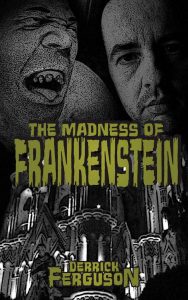
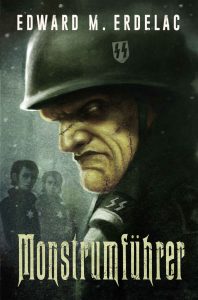
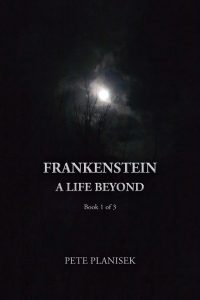
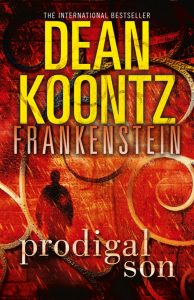
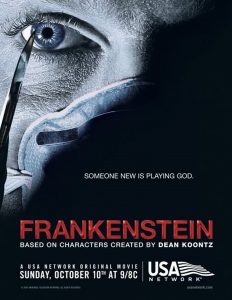
Great article. I had to run and look up an adaptation I read a few years back (someone had left it in a holiday apartment we stayed at so no expectations) called The Casebook of Victor Frankenstein by Peter Ackroyd. There’s a nice little twist at the end I didn’t see coming – though perhaps many would. Altogether an enjoyable, well-written addition to the mythos.